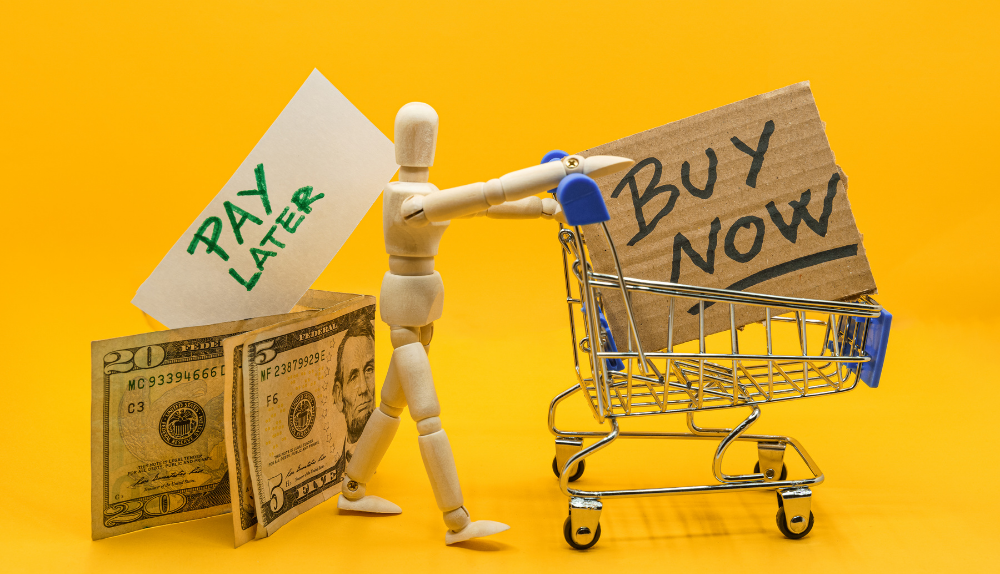As the holiday season approaches, the US holiday BNPL spending is anticipated to break records in their use of Buy Now, Pay Later (BNPL) services, according to a report by Adobe Analytics. The projection shows that holiday spending via BNPL platforms like Klarna, Afterpay, and Affirm will reach an unprecedented $18.5 billion during the final quarter of 2023, marking an 11.4% increase compared to last year. This surge in BNPL usage is set against a backdrop of rising consumer debt and a growing reliance on flexible payment solutions.
With U.S. consumers carrying increasing debt burdens, BNPL services have emerged as a popular method for spreading the cost of purchases across monthly installments. These platforms allow customers to shop for electronics, beauty products, and other holiday gifts while managing their budget over time. However, despite its convenience, the rapid adoption of BNPL is not without its risks, particularly for consumers who use credit cards to cover installment payments.
In this article, we’ll explore the reasons behind the explosive growth of BNPL services, the impact on holiday shopping, the potential risks for consumers, and how this financial trend is shaping the broader retail landscape.
Table of Contents
The Growing Popularity of Buy Now, Pay Later Services
BNPL services have gained immense popularity in recent years, providing consumers with a flexible and interest-free alternative to traditional credit cards. Platforms such as Klarna, Afterpay, and Affirm allow shoppers to divide their purchases into manageable installments, usually over four payments. The convenience of BNPL has appealed to consumers looking to stretch their holiday budgets, particularly those who are wary of incurring high-interest credit card debt.

According to Adobe Analytics, the projected $18.5 billion in BNPL holiday spending represents an 11.4% increase over 2022, outpacing the overall 8.4% growth in holiday retail sales. This highlights the growing preference for BNPL as a payment option during the busiest shopping season of the year.
One of the key factors driving BNPL’s popularity is the ability to make purchases without upfront payments. Shoppers can acquire high-ticket items like smartphones, laptops, and holiday gifts without having to immediately deplete their savings. As consumers increasingly prioritize financial flexibility, BNPL offers a compelling solution.
The Debt Factor: US Holiday BNPL Spending in 2023
In 2023, many Americans are grappling with rising debt levels. Data from the Federal Deposit Insurance Corporation (FDIC) indicates that net charge-off rates for credit cards—the amount that banks do not expect to collect on loans—rose to 4.82% in the second quarter, the highest rate since 2011. This increase highlights the financial strain that consumers are facing, particularly as inflation and cost-of-living pressures continue to weigh on household budgets.

With higher debt levels, consumers are turning to BNPL as a more manageable alternative to traditional credit cards. Instead of carrying a revolving balance on a credit card, BNPL allows consumers to divide purchases into fixed, interest-free payments over a set period. For many shoppers, this can alleviate the anxiety of large holiday purchases, offering a way to plan payments without facing hefty interest rates.
Delicia Hand, senior director of the digital marketplace at Consumer Reports, cautions that while BNPL can offer convenience, it may also pose risks for shoppers already burdened with debt. “Shoppers using credit cards to make BNPL purchases risk putting themselves in a cycle of debt that is difficult to escape,” she says. This cycle can occur when consumers use credit cards to cover installment payments, leading to additional interest charges if the credit card balance is not paid in full each month.
A Shift in Consumer Behavior: Electronics and Beauty Products in Demand
BNPL services are particularly popular in categories such as electronics and beauty products, which are traditionally high-demand items during the holiday season. According to Affirm, a leading BNPL provider, electronics such as cell phones, laptops, and headphones are expected to be top choices for holiday shoppers. These items are often viewed as high-ticket purchases, making BNPL an attractive option for consumers seeking to upgrade their gadgets or buy gifts without straining their finances.
Beauty products are also seeing a surge in demand among BNPL users. Platforms like Afterpay and Klarna report that shoppers are increasingly using installment plans to purchase luxury beauty products, making it easier to afford premium brands during the holiday shopping season.
This shift in consumer behavior reflects a broader trend in which shoppers are using BNPL not just for essential purchases but for discretionary spending as well. By spreading out payments, consumers feel empowered to make larger purchases without the immediate financial burden.
U.S. holiday BNPL spending 2023: The Impact on the Payments Ecosystem
The rapid adoption of BNPL is disrupting the traditional payments ecosystem, with BNPL providers capturing market share from debit cards, credit cards, and other payment methods. The ability to pay over time has made BNPL a preferred option for millions of shoppers, particularly younger consumers who may be hesitant to use credit cards.
However, the growing reliance on BNPL is also raising concerns among financial watchdogs and regulators. The Consumer Financial Protection Bureau (CFPB) issued new guidelines in 2023 requiring BNPL providers to investigate consumer disputes, refund returned products, and provide periodic billing statements. These regulations are aimed at protecting consumers and ensuring transparency in the rapidly growing BNPL market.
BNPL providers themselves are evolving to meet the changing landscape of consumer finance. For example, Affirm has strict policies around credit repayment, with Chief Operating Officer Michael Linford stating, “In general, we don’t think that a credit repayment for credit is a good thing.” This approach contrasts with some other providers that allow credit card payments for installment purchases, a practice that has raised concerns about potential debt accumulation.
Risks of Buy Now, Pay Later: A Debt Trap?
While BNPL services offer many advantages, they also come with risks, particularly for consumers who may not fully understand the implications of using these platforms. One of the primary concerns is the potential for overborrowing. Shoppers may be enticed by the ease of making purchases without upfront payments, but they may not consider their ability to repay the installments.
According to the New York Federal Reserve’s monthly Survey of Consumer Expectations, the probability of becoming delinquent on a loan in the next three months was 13.6% in August 2023, the highest since the onset of the COVID-19 pandemic. For consumers with annual incomes under $50,000, this figure was even higher, at 19.5%.
As more consumers turn to BNPL, the risk of missed payments and delinquency increases. BNPL providers report relatively low delinquency rates—typically below 2%—but the ease of access to credit through BNPL could lead to financial stress for some consumers, especially those already managing other forms of debt.
How BNPL is Shaping the Future of Retail
The rise of BNPL is reshaping the retail landscape, providing both opportunities and challenges for businesses. Retailers that partner with BNPL providers stand to benefit from increased sales, as the option to pay in installments can encourage shoppers to make larger purchases. For example, Klarna and Afterpay partner with major retailers such as Nike, Target, and Adidas, offering consumers flexible payment options on high-demand products.
At the same time, BNPL has become an essential tool for e-commerce platforms. Shopify, one of the world’s largest e-commerce platforms, offers Shop Pay, powered by Affirm, which allows merchants to offer installment plans to their customers. This integration of BNPL services into e-commerce platforms is likely to continue growing as more retailers recognize the potential to boost sales and improve customer satisfaction.
What’s Next for BNPL?
Looking ahead, BNPL is expected to continue its upward trajectory, especially during peak shopping periods like the holiday season. However, as the market grows, it is also likely to face increased scrutiny from regulators and consumer advocates.
To ensure sustainable growth, BNPL providers will need to focus on transparency, consumer protection, and responsible lending practices. This includes clear communication about fees, interest rates (if applicable), and the consequences of missed payments. Providers that prioritize these aspects will likely gain consumer trust and remain competitive in the evolving financial services landscape.





